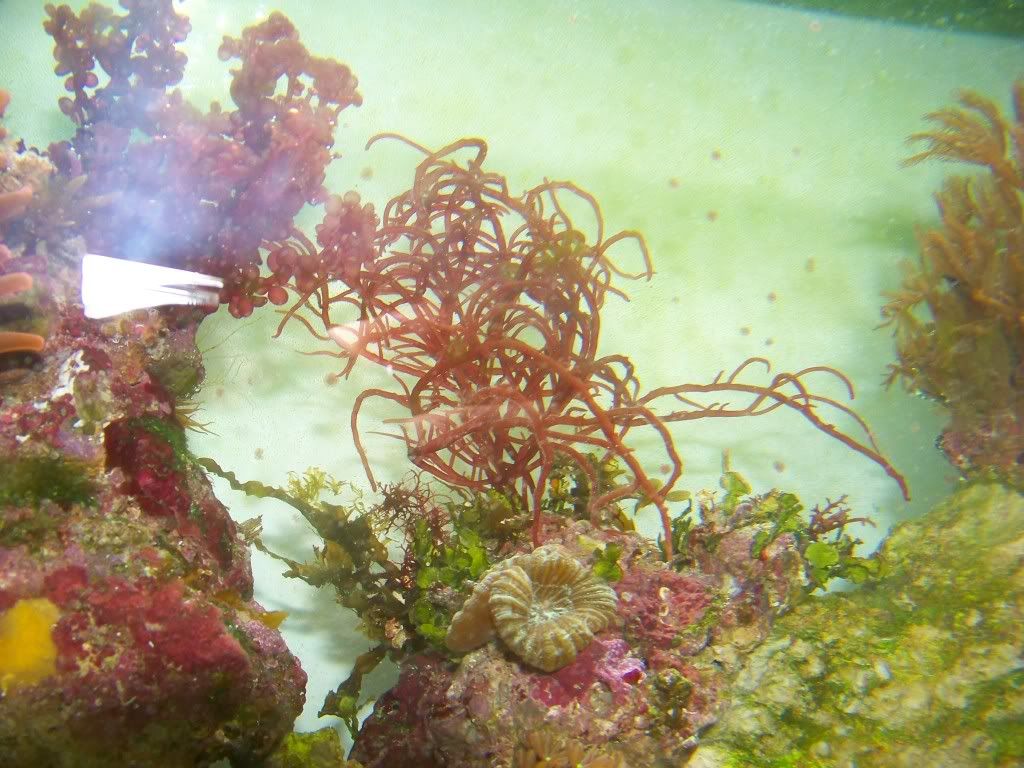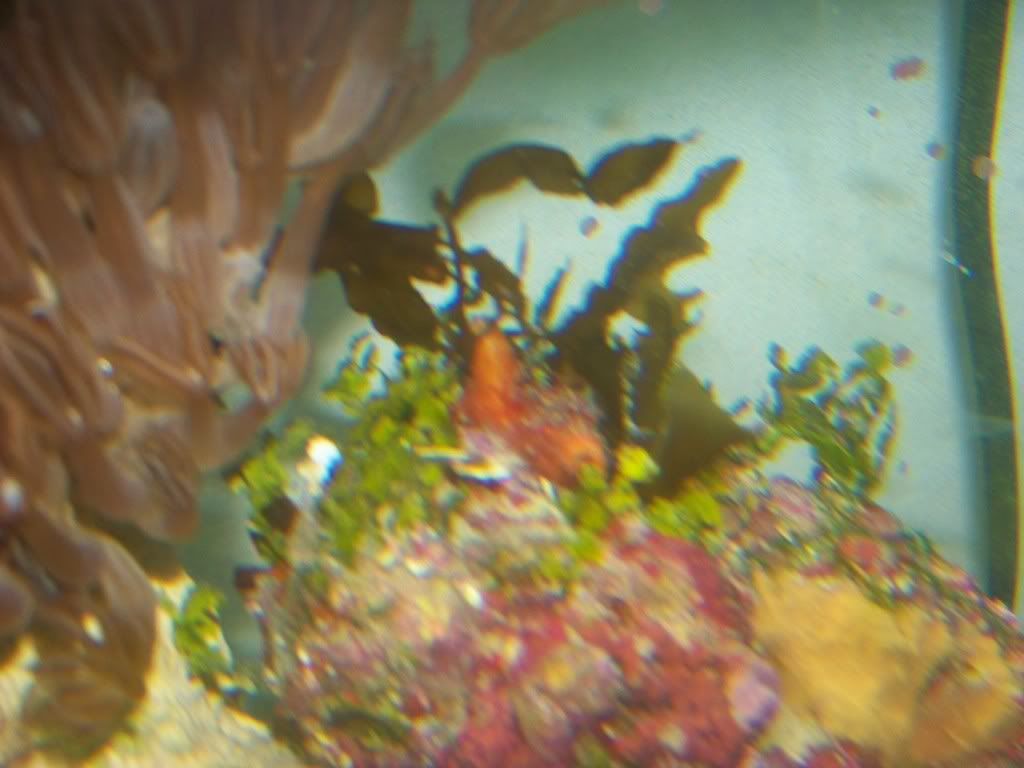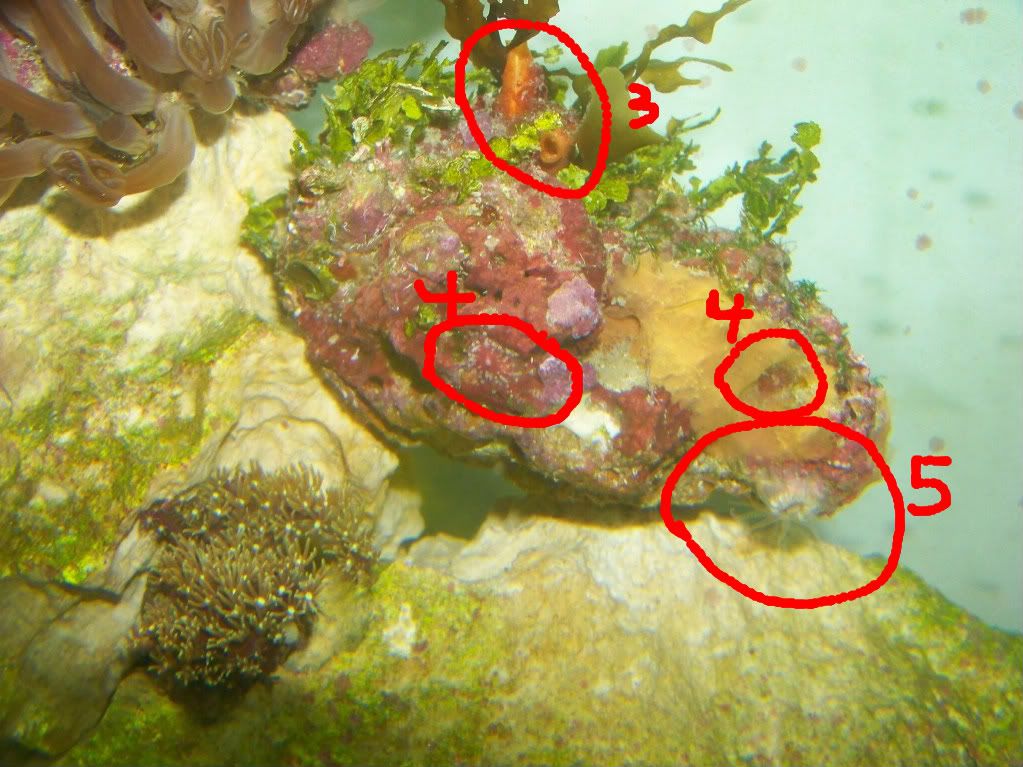racingtiger03
Member
these are a few random things I have found on my LR that I can't ID.. Still fairly new to the hobby as far as things I haven't researched lol.
#1/2

The red stuff(1) at the back of the rock. I'm sure is a macro-algae just curious what kind. Also the brain coral(2) on front I have up till now id'ed as a rose brain/pacific brain is that correct?
#3

The red tubes almost in the center of the picture. They open and close randomly, I suppose for filter feeding.
#4/5

again in the center 4 you'll see a few white ball specs coming out from a red center. The white balls are on what appears to be tentacles that extend out mostly at night and its just a red ball during the day. #5 is in the bottom right corner of the rock, just clear tentacles with white tips coming from some kind of skeleton base.
#1/2

The red stuff(1) at the back of the rock. I'm sure is a macro-algae just curious what kind. Also the brain coral(2) on front I have up till now id'ed as a rose brain/pacific brain is that correct?
#3

The red tubes almost in the center of the picture. They open and close randomly, I suppose for filter feeding.
#4/5

again in the center 4 you'll see a few white ball specs coming out from a red center. The white balls are on what appears to be tentacles that extend out mostly at night and its just a red ball during the day. #5 is in the bottom right corner of the rock, just clear tentacles with white tips coming from some kind of skeleton base.




